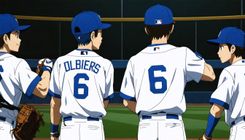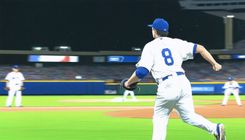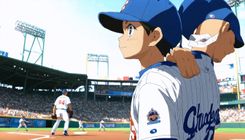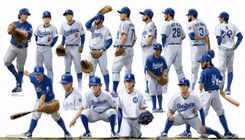Significant Moves Mark MLB Trade Deadline

The Major League Baseball trade deadline once again drew considerable attention, with a flurry of activity leading up to the final moments before Thursday evening's buzzer. What initially appeared to be a quiet mid-summer exchange process quickly transformed into a dynamic series of trades, featuring notable names such as Carlos Correa, Mason Miller, and Eugenio Suárez, influencing expectations for several teams across the league.
Mason Miller has emerged as one of the most exciting pitchers in baseball, showcasing remarkable velocity with his four-seam fastball often exceeding 103 MPH, complemented by an impressive slider. In a relatively brief Major League career, Miller has achieved striking statistics, allowing opponents to hit only .126 against him when they complete their at-bats on sliders. His long-term team control through 2029 meant that the Oakland Athletics were in a strong negotiating position, leading to a considerable return when he was traded. The San Diego Padres made a bold move, giving up both their top prospect, Leo De Vries, and several other significant players to acquire Miller and left-handed pitcher JP Sears. This transaction could benefit both teams, as the Padres acquired a potential closer and a reliable starter for the next several seasons, while the Athletics received prospects that could become critical pieces for their future, including a young pitcher in Braden Nett with notable potential.
Following the trade perspective, the Minnesota Twins experienced a tumultuous period driven by disappointment, particularly concerning the shoulder injury of pitcher Pablo López. The team recorded a strong start at 34-27, ranking third in the American League, but have since struggled, resulting in an AL-worst record of 17-30. Consequently, the front office chose to unload significant portions of their roster, including trading away notable players like Carlos Correa and Jhoan Durán. While star outfielder Byron Buxton expressed his commitment to staying in Minnesota, the roster was drastically reduced as the team shifted focus toward a rebuilding phase.
The New York Mets faced challenges within their bullpen leading into the trade deadline, prompting them to seek improvements. While closer Edwin Díaz performed exceptionally, the rest of the relief corps struggled. Acknowledging the need for reinforcements, the Mets successfully acquired three prominent rental relief pitchers: Ryan Helsley from the St. Louis Cardinals, Tyler Rogers from the San Francisco Giants, and Gregory Soto from the Baltimore Orioles, which transformed their bullpen into a potentially formidable asset for a postseason run. Although the Mets gave up considerable future prospects in these trades, the team hopes that their bold moves will pay dividends.
St. Louis Cardinals’ management opted to embrace a sell-off approach during the deadline despite previously indicating a commitment to rebuilding. Frustration grew within the franchise as significant players, including Nolan Arenado, held no-trade clauses and were unwilling to move. Consequently, the Cardinals’ trade returns were limited, receiving only modest prospects in exchange for their more complicated contracts. This left the organization in a challenging situation as they grappled with prolonged mediocrity without definitive upgrades for the future.
The trade landscape showcased Minnesota’s Jhoan Durán in a surprising light when the Philadelphia Phillies acquired him for a relatively modest price. This acquisition raised eyebrows given the value typically associated with closers with multiple years of control remaining. The Phillies continued to bolster their roster by securing center fielder Harrison Bader while only parting with minor league prospects, enhancing their lineup without impacting their top-tier talent. This strategic approach exemplifies the Phillies' ability to navigate the market effectively while preserving significant assets for future endeavors.
Across the league, the Chicago Cubs and Chicago White Sox faced contrasting circumstances as they approached the deadline. The Cubs, contending for a top spot in the standings, made several minor moves to enhance their roster, including acquiring players like Willi Castro and Andrew Kittredge. The effectiveness of these moves raised questions, with the team appearing reluctant to chase substantial upgrades that could propel them deeper into postseason contention. In contrast, the White Sox missed an opportunity to capitalize on their trade assets, notably retaining star player Luis Robert Jr. despite speculation regarding his future. Their inactivity during this critical period reinforced a perception of stagnation as they seek to redefine their trajectory.
In the midst of these developments, the Toronto Blue Jays made significant moves, acquiring former Cy Young winner Shane Bieber to bolster their pitching rotation. The Blue Jays, already positioned to contend, aimed to solidify their standing by adding a proven arm. Furthermore, the Cincinnati Reds made a puzzling move by trading for third baseman Ke'Bryan Hayes instead of pursuing dynamic offensive options that could enhance their struggling roster. This decision highlighted potential miscalculations regarding their roster needs, especially as their offensive production faltered.
Meanwhile, the Seattle Mariners sought to remedy past mistakes by reacquiring Eugenio Suárez, a highly sought-after player. His addition, along with other offensive enhancements, considerably strengthened the Mariners' roster, setting the stage for a competitive run in the second half of the season. The effectiveness of such trades reflects the broader strategy teams must consider as they address immediate needs while planning for future success. As the dust settled on the trade deadline, it was evident that numerous teams made strategic moves to redefine both immediate and long-term goals, setting the stage for an intriguing remainder of the season.









